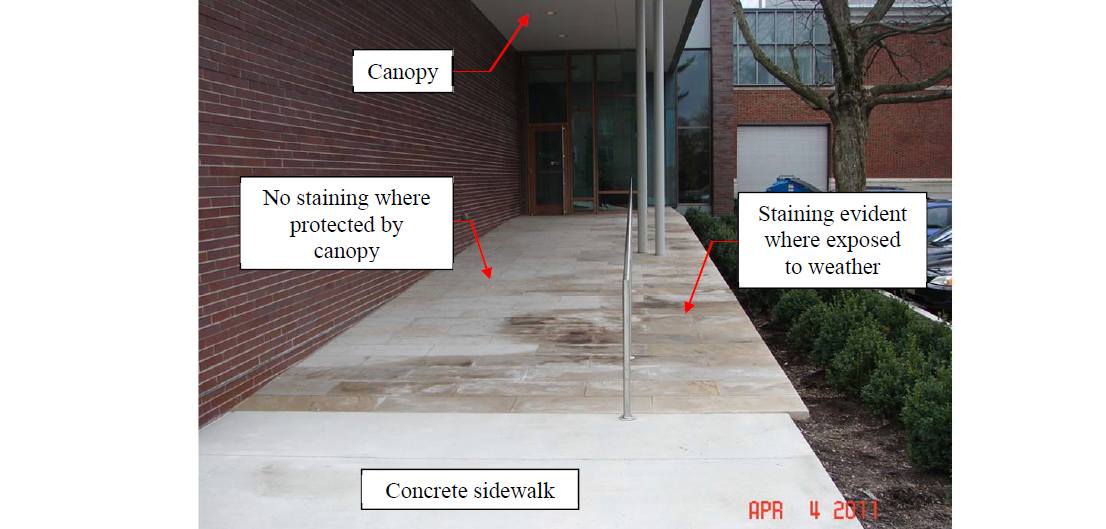1 Project Engineer, Whitlock Dalrymple Poston & Associates P.C., Manassas, VA 20110, United States, taguirre@wdpa.com
2 Principal, Whitlock Dalrymple Poston & Associates P.C., Manassas, VA 20110, United States, epeterson@wdpa.com
3 President and CEO, Caretti Inc., Camp Hill, PA 17001, United States, ghess@carettimasonry.com
ABSTRACT
Sandstone pavers were installed in a hard-set application outside a school building in the northeastern United States in early 2010. Soon after installation, brown staining was observed on the pavers, particularly in areas where the stone was either directly exposed to water or where runoff flowed over the surface of the stone. Several methods of stain removal, including power washing and the application of a proprietary ferrous cleaner, were attempted with varying degrees of success. In early 2011, crystalline efflorescence was noted on the surface of the stone in addition to the staining.
A testing regimen was developed by the authors to determine the cause of the staining and evaluate installation methods with the goal of reducing the tendency for future staining after paver replacement. Samples of both the installed stone and previously uninstalled samples were sent to an independent laboratory for analysis of the stain and deposit constituents. In addition, efflorescence testing was performed on several mock-ups in the laboratory. The mock-ups used various installation methods and materials, including the materials and mix design used in the original paver installation.
The test results indicated that the staining was organic, formed by dissolution of naturally occurring trace organic materials in the stone. These materials were released as alkalinity increased due to soluble salts migration. The efflorescence was the result of the naturally occurring soluble salts present in the cementitious mortar joints and setting bed of the paver system. Recommendations to mitigate the staining and efflorescence in future installations were developed.
KEYWORDS: efflorescence, mortar, paver, sandstone, staining, testing
391.pdf



